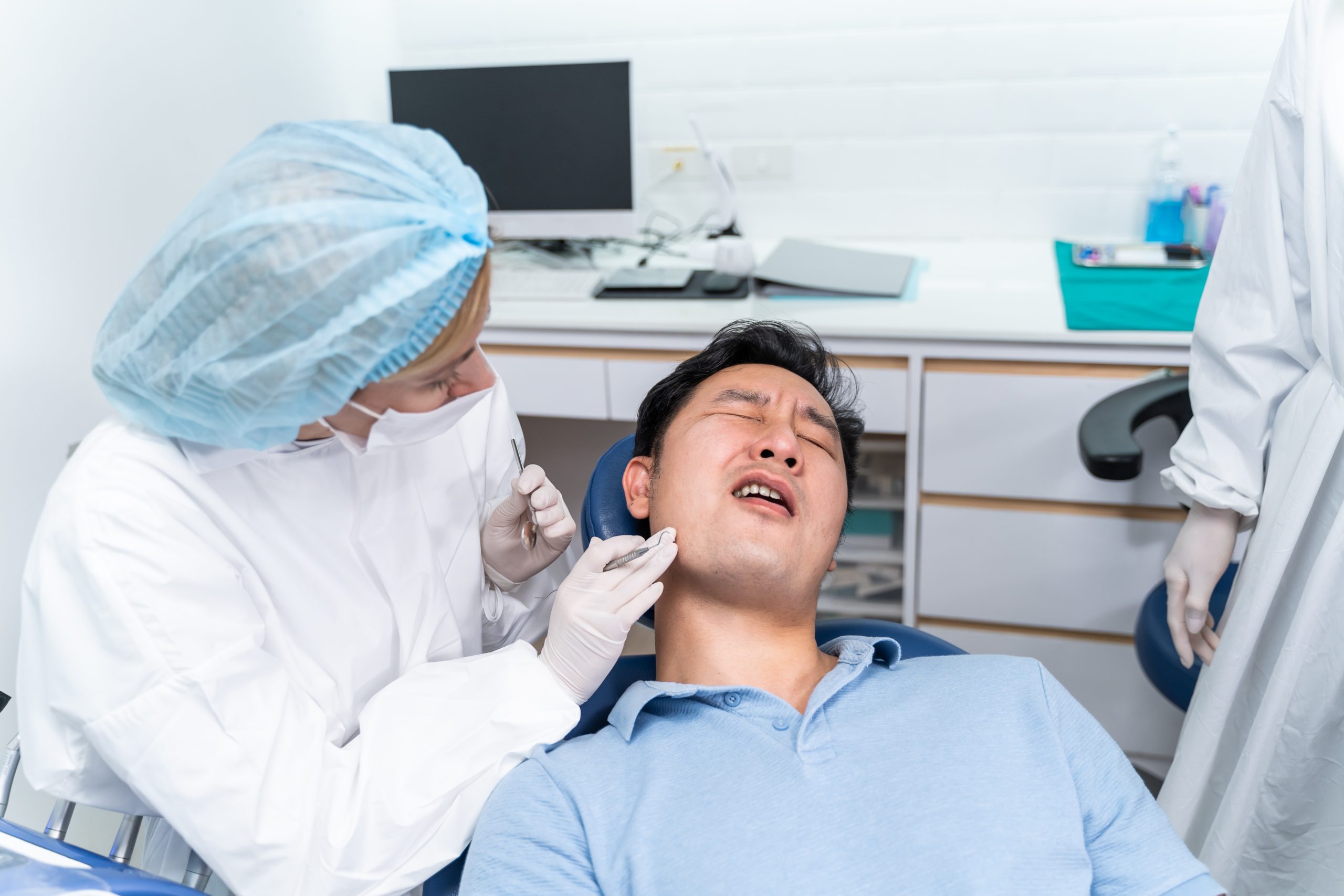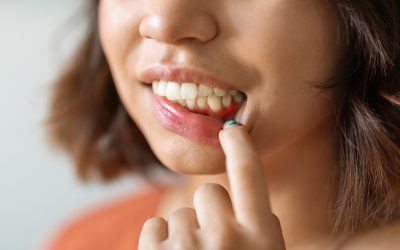What Is a Dental Injury?
A dental injury refers to any trauma affecting the teeth, gums, or supporting bone structures. These can be mechanical (like from a fall or sports accident), thermal (from extreme temperatures), or chemical (such as a burn from a substance).
Some dental injuries may seem mild but can lead to pulpal necrosis, root resorption, or even the loss of tooth structure if not treated properly. That’s why radiographic examination and a proper dental exam are essential, even for minor issues.
Types of Dental Injuries
Dental trauma can present in many ways. Below are the most common forms of traumatic dental injuries, how they occur, and what to do about them:
Gum Injury
Gums can be injured through aggressive brushing, flossing, or eating hard or crunchy foods. If mild, the injury may resolve on its own in 3–5 days. However, persistent swelling, bleeding, or pain should be assessed via clinical findings to rule out infection or deeper issues. This means booking an appointment with your dentist so they can assess the situation.
Tooth Intrusion
This is a severe dental trauma where the tooth is pushed inward into the socket. Permanent teeth affected by intrusion may later require root canal treatment. Immediate attention is critical to stabilize the tooth and minimize potential damage to the alveolar bone and blood vessels.
Ankylosed Primary Teeth
Sometimes, primary teeth fail to exfoliate (fall out) and aren’t replaced by permanent dentition, often because a permanent tooth is missing. These are referred to as ankylosed primary teeth. If they don’t fall out naturally, they can be replaced later in life with implants. Treatment may involve splint removal, post-retained crown, or extraction by an oral surgeon.
Bruised Tooth
A bruised tooth may result from impact without displacement. The pulp chamber may be inflamed, and pulp vitality tests will guide treatment. If the tooth becomes non-vital, a root canal treatment may be necessary to avoid pulpal necrosis.
Sharp Broken Tooth Cutting Tongue
If a sharp edge from a broken tooth is cutting your tongue or inner cheek, you should seek urgent care. A dentist can smooth the edge and prevent further injury to the buccal mucosa. Applying chewing gum over the area temporarily can protect your soft tissue until you can meet your dentist.
Concussed Tooth
A concussed tooth is one that has been impacted but hasn’t moved. Over time, the tooth may lose its pulp vitality and require root canal treatment. These types of traumatised tooth cases are common in sports and should be monitored with radiographic examination.
Chipped or Fractured Teeth
Tooth fractures vary in severity. A small enamel-only fracture may need only light smoothing, while deeper crown fractures may require a composite resin, dental bonding, or even extraction. Dentists often check for tooth fragments embedded in soft tissue using a cheek x-ray.
Dislodged (Luxated) Teeth
These dislodged teeth may be partially or fully out of alignment. The dentist may splint the tooth and perform a radiographic examination to determine whether the pulp chamber is intact. Often, these require follow-up appointments and a root canal treatment later on.
Avulsed Teeth
An avulsed tooth is one that has been completely knocked out. We recommend you bring the tooth immediately to a dentist, preferably stored in milk or water to preserve cells. Timing is critical; the sooner the tooth is replanted, the higher the chances of saving it. With replantation, we hope to avoid pulpal necrosis, however, if it occurs, a root canal treatment will be needed.
Broken Root Canal Tooth
When a previously treated tooth breaks, it may still be saved with a post-retained crown, depending on the vertical fracture or location of the break. If not salvageable, extraction and replacement with an implant are considered among the best treatment options.
What to Do If You Have a Dental Injury
If you’ve experienced dental trauma, don’t wait for a scheduled appointment; come in right away! Take painkillers if needed, but let the dentist evaluate the injury.
For soft tissue injuries, such as those to the buccal mucosa or gums, give it 3–5 days. If it’s not improving or becomes painful, it’s time for a dental exam with your doctor.
In cases where there’s an unusual lesion on your tongue, roof of mouth, or buccal mucosa lasting more than a few weeks, see your dentist immediately; this could be something more serious, such as oral cancer.
If you’re not sure whether it’s a minor issue or a seriously traumatised tooth, don’t take chances. Seek guidance based on clinical findings.
How to Treat Dental Injuries
There’s no one-size-fits-all solution for dental injuries. Treatment depends on the type of injury, whether it affects primary teeth or permanent dentition, and how quickly you get help. Here’s how treatment generally works:
- Minor chips or enamel-only fractures may require smoothing or composite resin.
- Loose fragments of teeth or displaced teeth may be stabilized using splints.
- Tooth intrusion, avulsed teeth, and luxated teeth may require splint removal, monitoring, and root canal treatment.
- Injuries in primary teeth are treated more conservatively to avoid damage to developing permanent dentition.
- Severe cases, especially those involving root fracture, may require extraction or post-retained crown placement.
- Foreign objects embedded in the gums or cheek may require removal under local anesthesia.
- Soft tissue injuries like those to the buccal mucosa or caused by dentures/retainers of poor fit. In some children, dental trauma involving primary and permanent teeth may impact stem cells in the pulp, requiring specialist care.
How Dentists Diagnose & Monitor Dental Injuries
Dentists rely on radiographic examination to assess pulp chamber damage, socket tooth trauma, and root fracture. This may include a cheek x-ray, panoramic scan, or cone-beam CT for precise imaging.
Vitality by pulp capping may be used in younger patients to preserve living pulp in mature teeth. Monitoring is also essential, especially in children, so an examination yearly is recommended for any injured teeth, even if they feel fine.
Rely on Trusted Guidelines
Treatment follows evidence-based protocols such as those published by the International Association of Dental Traumatology and tools like the Dental Trauma Guide. These resources help dentists make decisions based on age, tooth type, and injury severity, ensuring every traumatised tooth is treated appropriately.
Final Thoughts
We hope this quick dental trauma guide was of help!
We know that traumatic dental injuries can be painful and confusing, but acting quickly makes a big difference. Whether you’re dealing with tooth fragments, avulsed teeth, or discomfort after a blow to the mouth, the team at The Little Green Building in Toronto is here for you.
Call us at 416-769-8135, email littlegreenbuilding@gmail.com, or use our online form to book a dental exam today.
We’re happy to assess everything from minor pulp exposure tooth injuries to poor fit appliances, bodily injuries, or lingering sensitivity after dental trauma. Trust us to restore your oral health with compassion and expertise.





